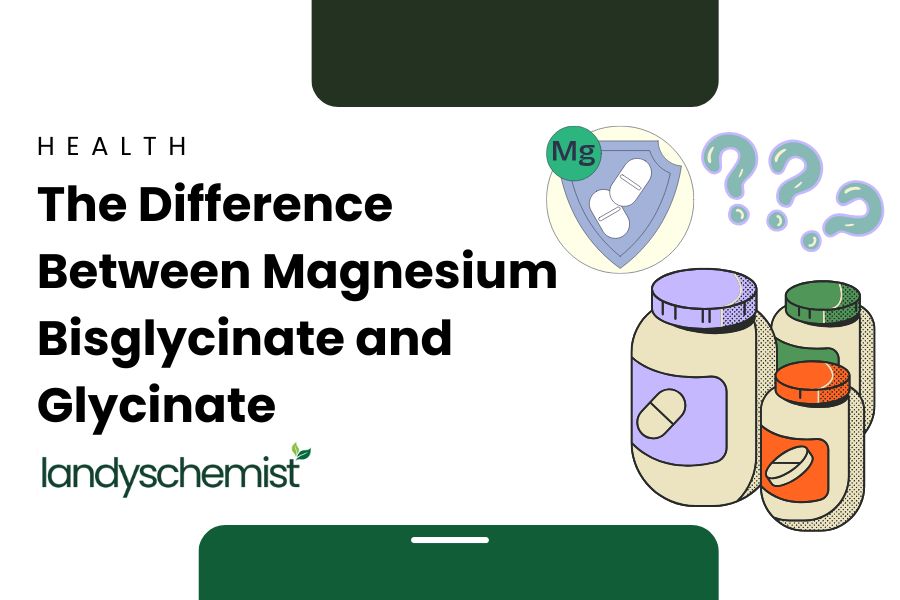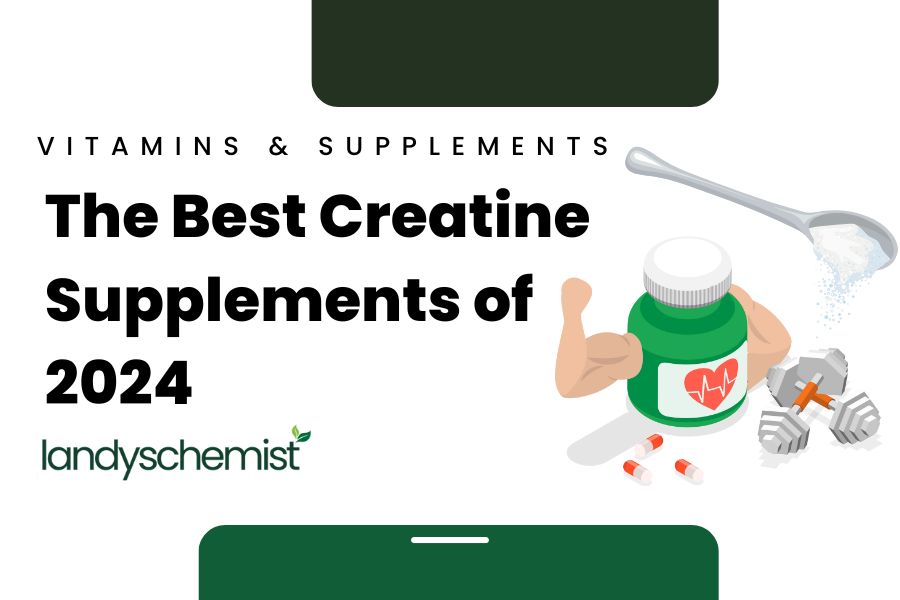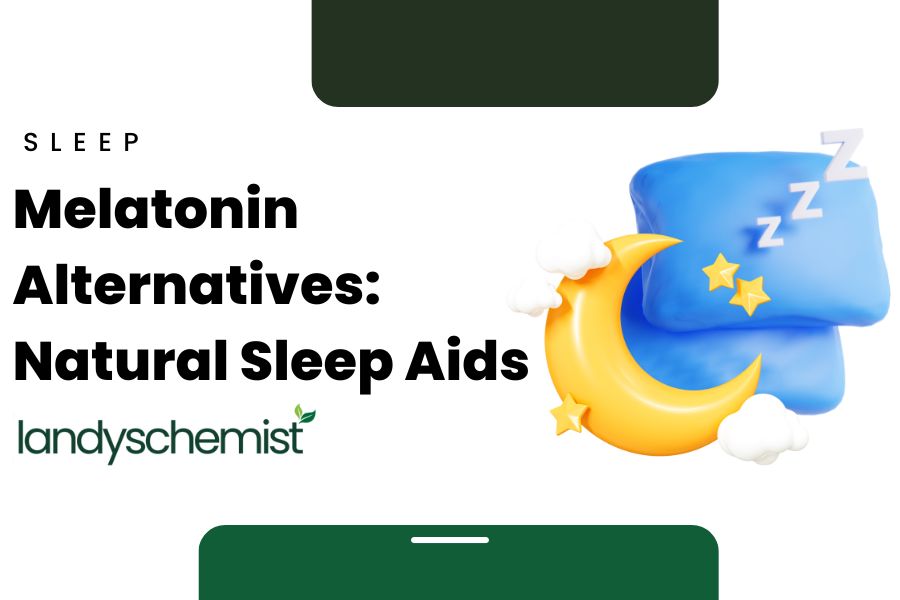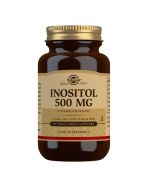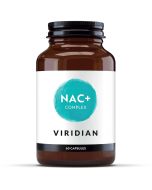
What are the differences between endometriosis and PCOS?
Endometriosis has been garnering a lot of attention in the news recently for research highlighting the number of individuals who go mis or undiagnosed by doctors who presume the pain is not bad or in their head.
Endometriosis and PCOS (Polycystic Ovary Syndrome) are two conditions that can affect females of reproductive age. They can present in similar manners making diagnosis difficult; however, it is important to understand that the cause and certain characteristic symptoms of endometriosis and PCOS are different.
In this blog, we explore the difference between PCOS and Endometriosis, from how the symptoms differ to the potential causes of PCOS and Endometriosis.
So, what is the difference between Endometriosis and PCOS?
What does PCOS mean?
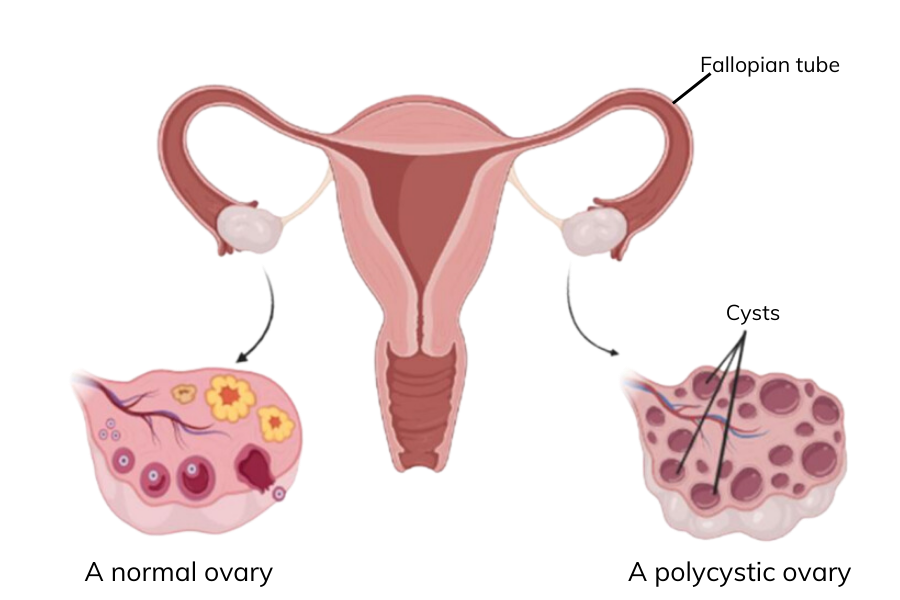
PCOS stands for polycystic ovary syndrome.
It is a hormonal disorder that impacts the ovaries and characterised by the enlargement of ovaries and the presence of numerous small follicles (fluid-filled sacs) within the ovaries that can measure up to 8mm in diameter. These follicles, which are essentially underdeveloped sacs where eggs mature, contribute to the challenges associated with PCOS.
One significant aspect of PCOS is that these sacs often do not release an egg, leading to irregular or absent ovulation and irregular periods in individuals with PCOS. Another challenge associated with PCOS is elevated levels of androgen hormones (male hormones) which can cause excessive body hair or hirsutism. Elevated androgen levels occur when the adrenal glands produce high amounts of androgen hormone.
What are the symptoms of PCOS?
Symptoms of PCOS can vary, and some individuals may not even exhibit any obvious symptoms but below are some symptoms that those with PCOS may experience:
- Hirsutism or excessive hair growth – Elevated androgen levels can cause body hair to grow more on places like the face, chest, body and back.
- Irregular and heavy periods – During a regular menstrual cycle, the ovaries will release an egg into the uterus. In those with PCOS, ovulation is infrequent or does not occur, which increases the likelihood of irregular or absent periods.
- Weight gain – PCOS can cause the body to respond less to insulin, increasing the risk of insulin resistance. High Insulin levels can lead to weight gain as the body will signal to start to store the excess sugar within our body as fat.
- Thinning hair or hair loss – Like with Hirsutism, elevated androgen levels can also cause androgenic alopecia, which is hair loss around the front regions of the head.
- Oily skin and acne – The higher levels of androgenic hormones can cause more sebum to be produced by the sebaceous glands which can contribute to clogged pores and inflammation, and potentially acne.
What are some causes of PCOS?
The cause of PCOS is complex and not exactly known, but it may be genetic, often running in families and be related to hormonal imbalances within the body.
There may be other factors playing a role in the development of PCOS such as high levels of androgen hormones. These high levels contribute to irregular cycles by preventing the ovaries from releasing eggs.
Another factor is insulin resistance. Those with PCOS tend to have higher levels of insulin which can in turn increase androgen levels. This is because individuals with PCOS may experience insulin resistance, where the body is unable to efficiently process insulin, causing high levels of glucose in the blood. If the body is resistant to insulin, the body tries to produce even more insulin to try and overcome this.
What does Endometriosis mean?
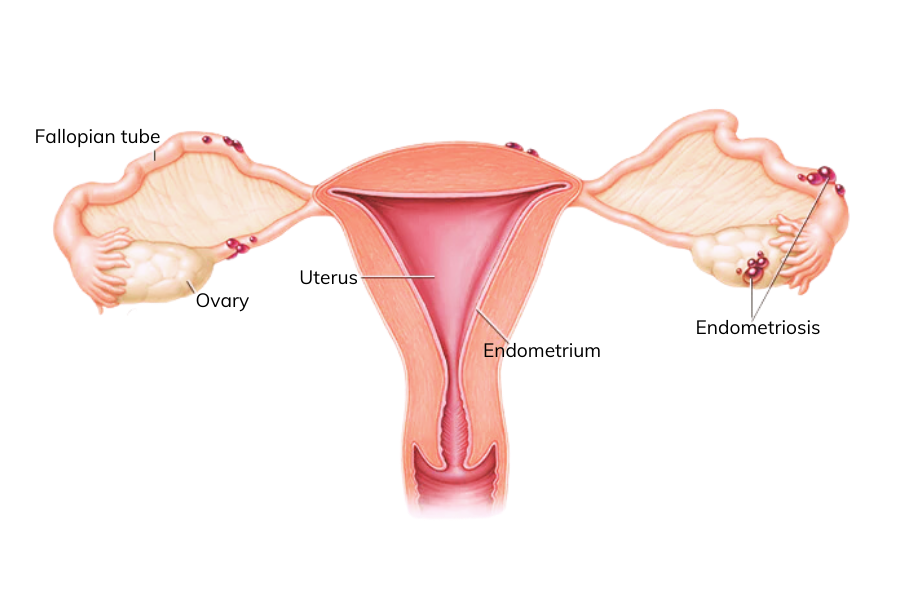
Endometriosis means that endometrial tissue grows outside of the uterus and in other places like the ovaries and fallopian tubes.
The inner lining of the uterus is called the endometrium. This is what is shed during a menstrual period. If you have endometriosis, then this tissue can grow outside the uterus and become inflamed. This tissue growth can also lead to adhesions or scar tissue which can cause pain.
What are the symptoms of Endometriosis?
Endometriosis symptoms can be varied, with some experiencing more pain or symptoms than others. Some common endometriosis symptoms include:
- Pelvic pain – Pain severity can depend on the location of the endometrial tissue, and often occurs due to inflammation of the tissue.
- Period pain
- Pain during sex – Pain during sex can occur due to inflammation and the endometrial growths being stretched and pulled.
- Heavy periods – As more endothelial tissue is growing in the body, there is also more tissue to shed.
- Difficulty getting pregnant
- Difficulty with bowel movements – Endometrial tissue can affect the intestine peritoneum (the lining of the abdomen) and bowel which can cause painful bowel movements, constipation, bloating and discomfort.
What are some causes of Endometriosis?
Endometriosis can be caused by numerous factors including genetics, but it is still quite unclear the exact known cause.
One cause is that the body has high levels of oestrogen which can cause the growth of endometriotic tissue to continue and persist. These high levels also contribute to inflammation and pain. Endometriotic tissue also contains aromatase, an enzyme which converts testosterone to oestrogen. This can cause the tissue growth to be stimulated even more.
Other factors include inflammation, and retrograde menstruation or reverse menstruation. Retrograde menstruation involves endometrial tissue transporting into the fallopian tubes and surrounding pelvic cavity rather than out the vagina. This can cause the endometrial tissue to implant outside of the uterus.
What is the difference between Endometriosis and PCOS?
The primary distinction between endometriosis and PCOS relates to their underlying causes and mechanisms. Endometriosis is characterised by the abnormal growth of endometrial tissue outside the uterus, whereas PCOS is marked by the presence of multiple ovarian follicles and a hormonal imbalance, specifically elevated androgen levels in the body.
There can be similarities in symptoms present in both conditions, however due to high androgen levels, PCOS individuals can experience excess hair growth and hair loss. Those with endometriosis can often experience painful sexual intercourse and pelvic pain due to the inflammation of endometrial tissue.
It is also more difficult to diagnose endometriosis, due to a laparoscopy being required for a 100% true diagnosis. PCOS diagnoses tend to involve physical exams and blood tests to identify if cysts are present and how imbalanced the hormone levels are.
How does treatment for endometriosis and PCOS differ?
Treatments for PCOS can vary, from the contraceptive pill being recommended to help you achieve more regular periods and balancing hormones to prescribing creams like eflornithine which can help to slow down the growth of undesired facial hair. Sometimes minor surgical intervention may be involved where the ovaries are surgically treated to remove tissue that’s producing these high androgen levels. It is best to consult your doctor or healthcare professional if you suspect you have PCOS.
Treatments for Endometriosis tends to involve the use of anti-inflammatory medications like NDAIDS (paracetamol and ibuprofen) to reduce the pain. In other cases, the combined oral contraceptive pill or progestogens are recommended to help reduce overproduction of oestrogen within the body. Minor surgery can also be recommended by doctors where the endometriosis tissue is removed however endometriosis is not guaranteed to be gone, especially if some endometriotic tissue is left. It is always recommended to discuss possible options with your doctor or healthcare provider if you may have endometriosis.
Can you have endometriosis and PCOS at the same time?
Yes, it is possible to have endometriosis and PCOS at the same time. Whilst these conditions can be distinct with different causes and not affect each other, they can also coexist in some individuals.
A study found that the high androgen levels and insulin resistance that is often seen in PCOS may increase oestradiol levels indirectly, potentially increasing the risk of endometriosis. It is always important to find the root cause of the problem, whether it is hormonal imbalance or endometriotic tissue growth outside of the uterus.
Summary:
- PCOS or polycystic ovary syndrome is a hormonal disorder characterised by enlarged ovaries, the presence of small follicles and high androgen levels, often leading to irregular ovulation and periods, insulin resistance and hirsutism.
- Endometriosis is the growth of endothelial tissue outside the uterus leading to symptoms like pelvic pain, painful intercourse, heavy periods, and difficulty with bowel movements.
- Both PCOS and Endometriosis can coexist in some individuals and whilst treatments may overlap, they are distinct conditions with separate causes.
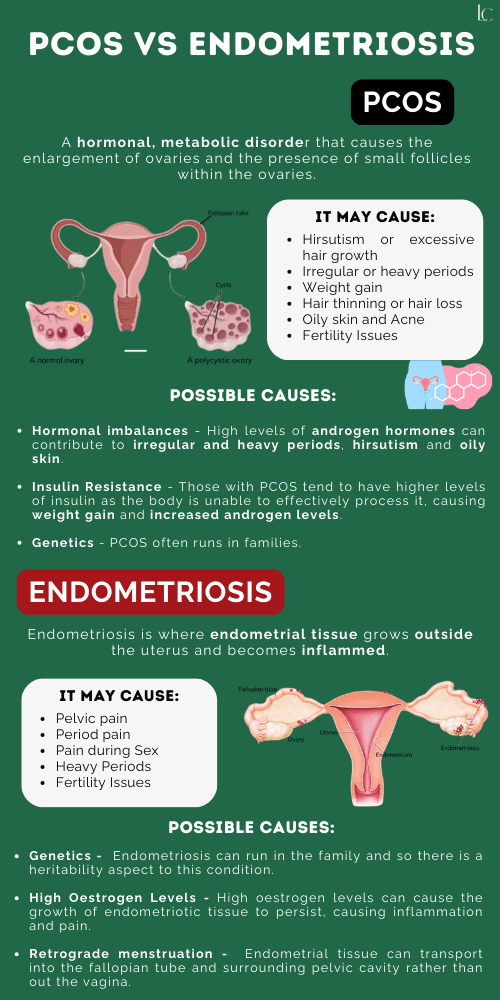
By Saarah Mengrani, MSc Biotechnology + Marketing Coordinator

